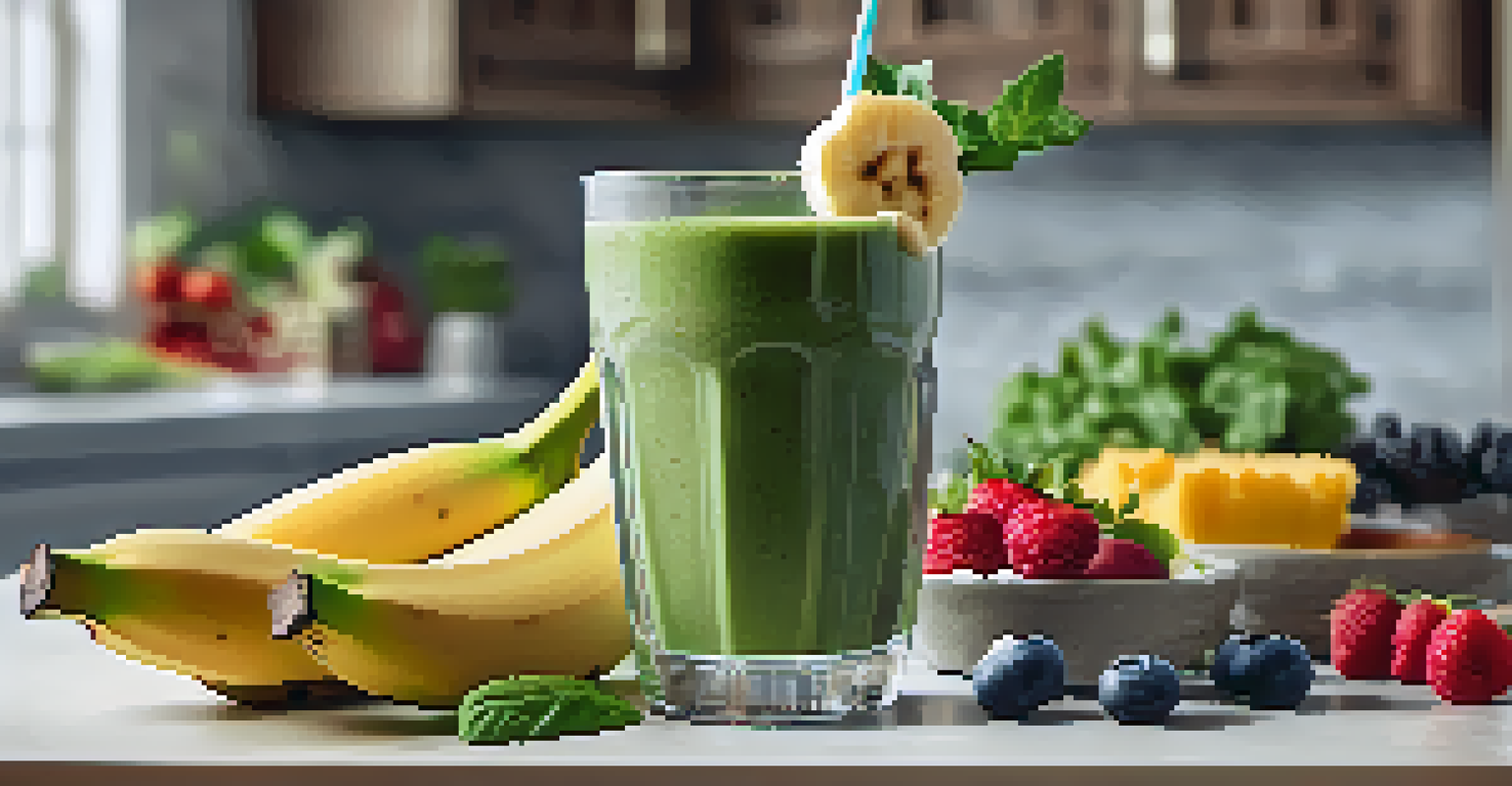Benefits of Raw Food in Intermittent Fasting Plans Explained

Understanding Intermittent Fasting Basics
Intermittent fasting (IF) is an eating pattern that alternates between periods of eating and fasting. This approach doesn’t prescribe specific foods; rather, it focuses on when to eat. Popular methods include the 16/8 method or the 5:2 approach, both aiming to optimize your body's natural rhythms and promote better health.
Let food be thy medicine and medicine be thy food.
During fasting phases, your body undergoes various biochemical changes, which can lead to improved insulin sensitivity and fat loss. By restricting your eating window, you may find it easier to manage your calorie intake. This can be a game-changer for those looking to lose weight or improve metabolic health.
When combined with raw food, intermittent fasting can amplify these benefits. Raw foods, rich in nutrients and enzymes, can help support your body during the fasting windows, ensuring you remain energized and nourished.
Nutrient Density of Raw Foods
One of the primary benefits of raw foods is their high nutrient density. Foods like fruits, vegetables, nuts, and seeds are packed with vitamins, minerals, and antioxidants that can support your overall health. Eating these foods during your eating windows can provide your body with the fuel it needs to thrive.

Moreover, raw foods are often lower in calories compared to processed options. This means you can eat a more substantial volume of food while still maintaining a caloric deficit, which is essential for weight management. Picture a vibrant salad brimming with color; it’s not just appealing to the eye but also beneficial for your body.
Intermittent Fasting Basics
Intermittent fasting focuses on when to eat, promoting metabolic health and weight management.
Incorporating raw foods into your intermittent fasting plan can ensure you’re getting the nutrients necessary for optimal performance. Imagine feeling full and satisfied without the heavy feeling that comes from cooked, processed foods.
Enhanced Digestion with Raw Foods
Raw foods are often easier to digest because they contain natural enzymes that aid in the digestive process. When you consume raw fruits and vegetables, these enzymes help break down food, making nutrients more accessible to your body. This can be particularly beneficial during the eating window of an intermittent fasting plan.
The food you eat can be either the safest and most powerful form of medicine or the slowest form of poison.
Additionally, a high-fiber diet from raw foods can promote regular bowel movements and improve gut health. Fiber acts like a broom, sweeping through your digestive tract and keeping things moving smoothly. This is crucial, especially if you're changing your eating habits with intermittent fasting.
By promoting better digestion, raw foods can make you feel lighter and more energized. This can help you make the most of your fasting periods, allowing your body to focus on healing and detoxification rather than processing heavy meals.
Weight Management Benefits of Raw Foods
Incorporating raw foods into your intermittent fasting plan can significantly aid in weight management. These foods tend to be lower in calories but high in volume, which can help you feel full without overeating. Imagine munching on fresh veggies instead of reaching for that bag of chips; it’s a simple switch that can make a big difference.
Moreover, the natural sugars found in fruits provide a quick energy boost without the crash associated with processed sugars. This can help you maintain your energy levels throughout the day, especially during fasting periods. You’ll find that you’re less likely to experience cravings that can derail your fasting efforts.
Benefits of Raw Foods
Incorporating raw foods during eating windows enhances nutrient intake and supports energy levels.
As you balance raw foods with intermittent fasting, you're more likely to reach your weight goals in a sustainable way. It’s about creating a lifestyle rather than a temporary diet, which is essential for long-term success.
Improved Energy Levels with Raw Foods
Many people report feeling more energized when they switch to a diet rich in raw foods. This boost in energy is largely due to the vitamins, minerals, and antioxidants found in fresh produce. Unlike processed foods that can lead to energy crashes, raw foods provide a steady source of fuel for your body.
When you’re practicing intermittent fasting, maintaining energy levels is crucial for productivity and focus. Raw foods can help you stay sharp during both eating and fasting periods. Think of how refreshed you feel after a smoothie made with leafy greens and fruits; that’s the kind of energy we’re talking about.
By prioritizing raw foods in your eating windows, you may find it easier to maintain your daily activities and exercise routines. This synergy between raw foods and intermittent fasting can create a powerful health-enhancing cycle.
Detoxification Benefits of Raw Foods
Raw foods can play a significant role in detoxification, especially when combined with intermittent fasting. Fresh fruits and vegetables are hydrating and can support your body’s natural detox processes. Think of your body as a car; just like regular oil changes keep it running smoothly, a diet rich in raw foods can help keep your internal systems clean.
During fasting periods, your body gets a chance to repair and detoxify itself. Raw foods can enhance this process by providing the nutrients and hydration necessary for optimal function. Foods like cucumbers and watermelon are excellent for flushing out toxins due to their high water content.
Sustainable Eating Choices
Choosing raw foods aligns with a sustainable lifestyle, benefiting both personal health and the environment.
By integrating raw foods into your intermittent fasting routine, you not only support your detox efforts but also promote overall wellness. This can lead to clearer skin, increased energy, and a greater sense of vitality.
Sustainability and Raw Food Choices
Choosing raw foods can also contribute to a more sustainable lifestyle. Many raw foods are minimally processed and can reduce your carbon footprint compared to heavily processed options. By opting for local and seasonal produce, you’re not only supporting your health but also the environment.
Intermittent fasting encourages mindful eating, which aligns well with making sustainable food choices. When you’re conscious of what you eat, you’re more likely to choose foods that are not only good for you but also good for the planet. Imagine savoring a fresh salad made from ingredients sourced from your local farmer’s market.

By incorporating raw foods into your intermittent fasting plan, you’re taking steps toward a healthier planet and a healthier you. It’s an opportunity to make a positive impact with your food choices while enhancing your overall well-being.